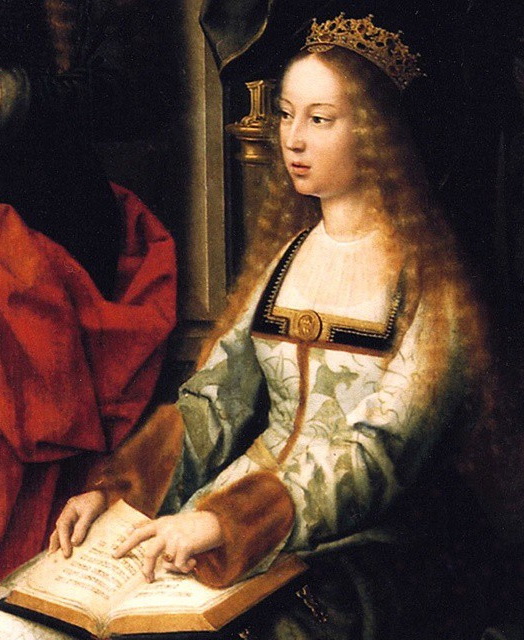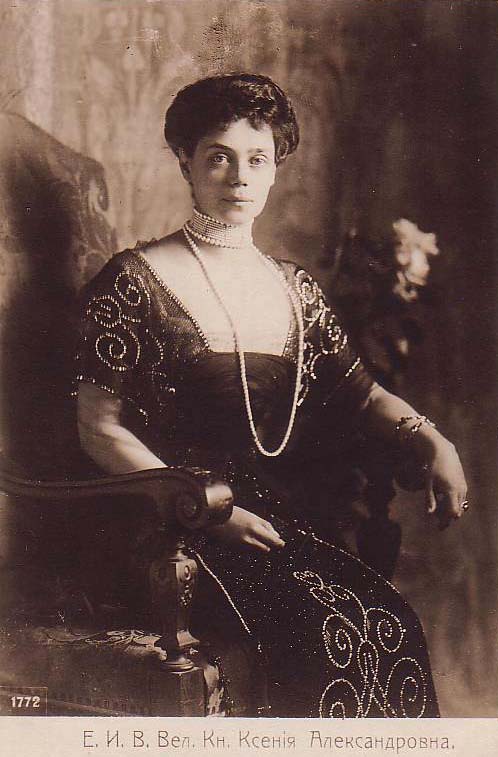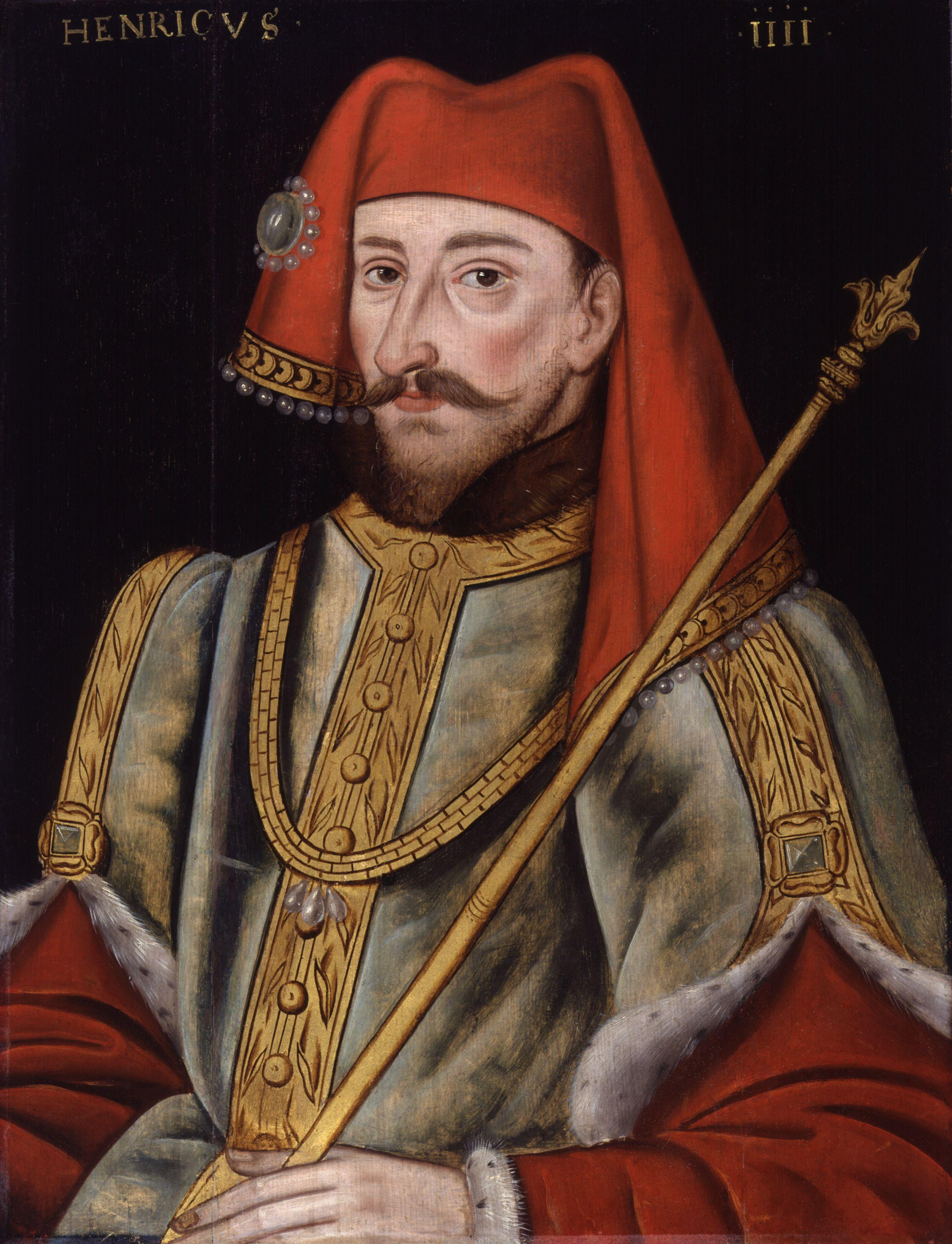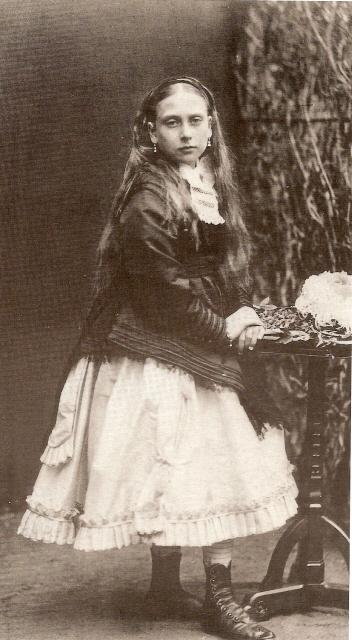© Unofficial Royalty 2024

Queen Isabella I of Castile and Leon; Credit – Wikipedia
April 22, 1355 – Death of Eleanor of Woodstock, daughter of King Edward II of England, at Deventer Abbey in Gueldres, now in the Netherlands; buried at Deventer Abbey
In 1332, 14-year-old Eleanor married 37-year-old Reinald II, then Count of Guelders and later Duke of Guelders. The couple had two sons and Eleanor was stepmother to Reinald’s four daughters from his first marriage. In 1343, 48-year-old Reinald II, Duke of Guelders died after a riding accident. Eleanor was named one of the Regents for her nine-year-old son Reinald III, Duke of Guelders, but the other Regents made the situation so difficult for her that she was forced to resign. In 1350, with encouragement from his mother, Eleanor’s younger son Edward began a civil war against his brother Reinald III for control of the Duchy of Guelders. When Eleanor attempted to reconcile with her son Reinald, he rejected her reconciliation attempts and confiscated her property. Eleanor was then forced to retire to the Cistercian where she died in poverty on April 22, 1355, aged 36.
Unofficial Royalty: Eleanor of Woodstock, Duchess of Guelders
April 22, 1451 – Birth of Queen Isabella I of Castile and Leon at Madrigal de las Altas Torres in Avila, Spain
Isabella was the wife of King Ferdinand of Aragon and the mother of Catherine of Aragon, the first wife of King Henry VIII of England. Her great-grandfather was John of Gaunt, son of King Edward III of England. The marriage of Queen Isabella I of Castile and León (reigned 1474 – 1504) and King Ferdinand II (Fernando in Spanish) of Aragon (reigned 1479 – 1516) led to the political unification of the Kingdom of Aragon and the Kingdom of Castile and León into the Kingdom of Spain under their grandson King Charles I (Carlos in Spanish), King of Spain who later also became Charles V, Holy Roman Empire.
Unofficial Royalty: Queen Isabella I of Castile and Leon
April 22, 1847 – Birth of Grand Duke Vladimir Alexandrovich of Russia, son of Alexander II, Emperor of All Russia, at the Winter Palace in St. Petersburg, Russia
As the third son of Alexander II, Emperor of All Russia, Vladimir was considered distant from the throne but in 1865, the death of his eldest brother Tsesarevich Nicholas Alexandrovich at the age of 21 changed that. Vladimir was then the second in the line of succession after his elder brother Alexander, the future Alexander III, Emperor of All Russia. In 1874, Vladimir married Marie of Mecklenburg-Schwerin and they had four sons and one daughter. On February 17, 1909, 61-year-old Vladimir died suddenly after suffering a major cerebral hemorrhage. Today, the most recognized claimant as the Head of the Imperial Family of Russia is through Vladimir’s line. Queen Elizabeth II’s first cousins, Prince Edward, Duke of Kent, and his sister and brother Princess Alexandra and Prince Michael, are Vladimir’s great-grandchildren through his daughter Elena who married into the Greek royal family.
Unofficial Royalty: Grand Duke Vladimir Alexandrovich of Russia
April 22, 1852 – Birth of Grand Duke Guillaume IV of Luxembourg, as Wilhelm Alexander, Hereditary Prince of Nassau in Biebrich Palace in Wiesbaden, Duchy of Nassau, now Hesse, Germany
The Grand Duchy of Luxembourg was united with the Netherlands and King Willem I of the Netherlands was also Grand Duke of Luxembourg. This rule continued until the death of King Willem III of the Netherlands in 1890. His successor was his daughter Wilhelmina, who could not inherit the throne of the Grand Duchy of Luxembourg due to the Salic Law which prevented female succession. Through the Nassau Family Pact, Wilhelm’s father Adolph became the Grand Duke of Luxembourg and Wilhelm became His Royal Highness The Hereditary Grand Duke of Luxembourg on November 23, 1890. Usually, Wilhelm is styled using the French for Wilhelm, Guillaume. In 1893, he married Infanta Maria Ana of Portugal and the couple had six daughters including two reigning Grand Duchesses of Luxembourg.
Unofficial Royalty: Guillaume IV, Grand Duke of Luxembourg
April 22, 1868 – Birth of Archduchess Marie Valerie of Austria, daughter of Emperor Franz Joseph I of Austria, in Ofen (Buda), Hungary
Full name: Marie Valerie Mathilde Amalie
Valerie’s elder siblings had been raised by her paternal grandmother Archduchess Sophie, born a Princess of Bavaria, who was also the maternal aunt of Valerie’s mother Empress Elisabeth, also born a Princess of Bavaria. Empress Elisabeth was never close to her two elder surviving children. An older and wiser Empress Elisabeth decided that her youngest child Valerie would be hers and hers alone. Her obvious preference for Valerie can be seen by the nickname her mother gave her – die Einzige – the only one. In 1890, Valerie married Archduke Franz Salvator of Austria-Tuscany. The couple had ten children.
Unofficial Royalty: Archduchess Marie Valerie of Austria
April 22, 1872 – Birth of Princess Margarete of Prussia, granddaughter of Queen Victoria, at Neues Palais in Potsdam, Kingdom of Prussia, now in Brandenburg, Germany
Full name: Margarete Beatrice Feodora
Known as Mossy, she was the daughter of Friedrich III, German Emperor, King of Prussia and Victoria, Princess Royal. She married Prince Friedrich Karl of Hesse. They had six sons including two sets of twins. Two of their sons were killed in action during World War I and one was killed in action during World War II. Christoph, the son who was killed in World War I, was the first husband of Princess Sophie of Greece and Denmark, sister of Prince Philip, Duke of Edinburgh.
Unofficial Royalty: Princess Margaret of Prussia, Landgravine of Hesse
April 22, 1897 – Death of Elizabeth Russell, Duchess of Bedford, Queen Victoria’s Mistress of the Robes 1880–1883 and Acting Mistress of the Robes 1886, at Latimer House near Chesham, Buckinghamshire, England; buried in the Bedford Chapel at St. Michael’s Church in Chenies, Buckinghamshire, England
Born Lady Elizabeth Sackville-West, she was the daughter of George Sackville-West, 5th Earl De La Warr. She married Francis Russell, 9th Duke of Bedford
Unofficial Royalty: Elizabeth Russell, Duchess of Bedford
April 22, 1906 – Birth of Prince Gustaf Adolf of Sweden, Duke of Västerbotten, eldest son of King Gustaf VI Adolf of Sweden, father of King Carl XVI Gustaf of Sweden, at the Royal Palace in Stockholm, Sweden
Full name: Gustaf Adolf Oscar Fredrik Arthur Edmund
Prince Gustaf Adolf was the father of King Carl XVI Gustaf of Sweden and would have himself become King of Sweden had he not died tragically in an airplane crash at the age of 40. His only son, nine-month-old Carl Gustaf, became second in the line of succession and would succeed his grandfather, King Gustaf VI Adolf, in 1973.
Unofficial Royalty: Prince Gustaf Adolf of Sweden, Duke of Västerbotten
April 22, 1922 – Death of Marie of Schwarzburg-Rudolstadt, Grand Duchess of Mecklenburg-Schwerin, 3rd wife of Friedrich Franz II, Grand Duke of Mecklenburg-Schwerin, at Noordeinde Palace in The Hague, the Netherlands; buried at Schwerin Cathedral in Schwerin, Germany
In 1868, Marie married the widowed Grand Duke Friedrich Franz II of Mecklenburg-Schwerin as his third wife, and they had four children. Through their son Heinrich, who married Queen Wilhelmina of the Netherlands, Marie and her husband are ancestors of the Dutch royal family. Marie died while she was in The Netherlands for the 46th birthday celebrations of her son Heinrich.
Unofficial Royalty: Marie of Schwarzburg-Rudolstadt, Grand Duchess of Mecklenburg-Schwerin
This article is the intellectual property of Unofficial Royalty and is NOT TO BE COPIED, EDITED, OR POSTED IN ANY FORM ON ANOTHER WEBSITE under any circumstances. It is permissible to use a link that directs to Unofficial Royalty.









